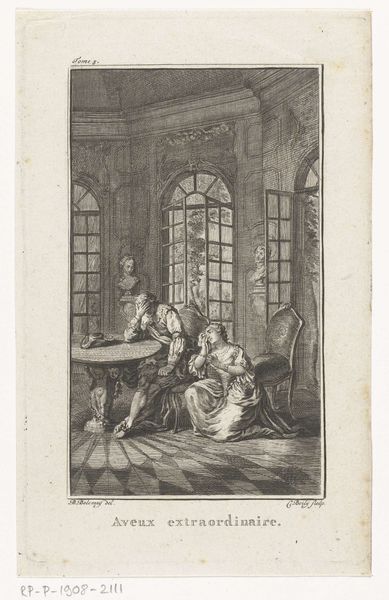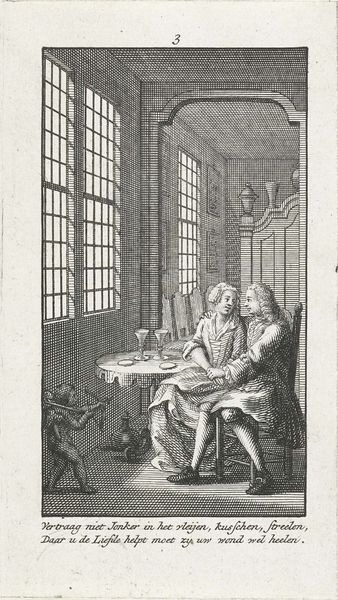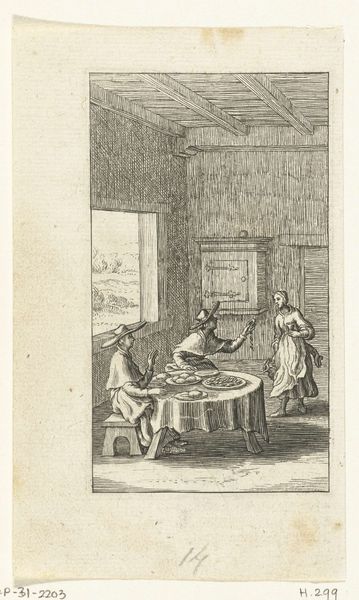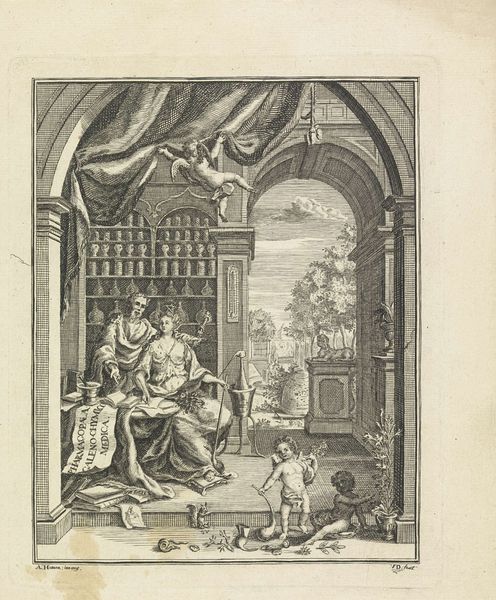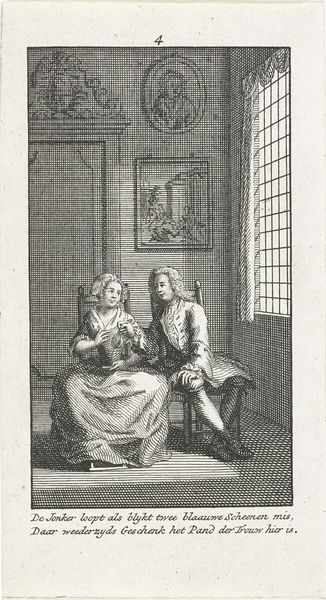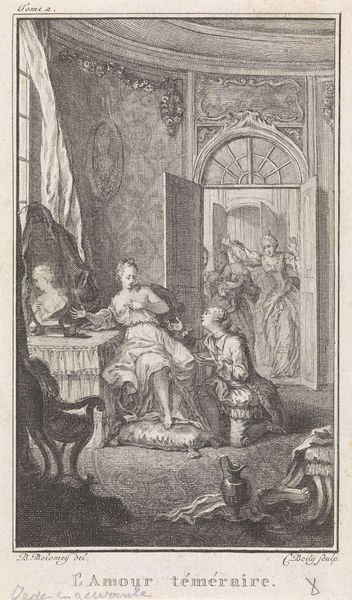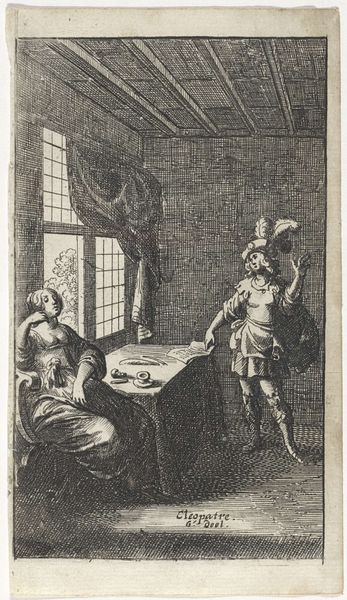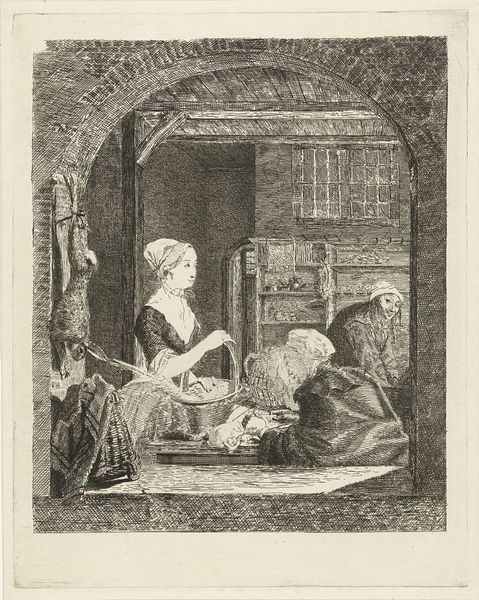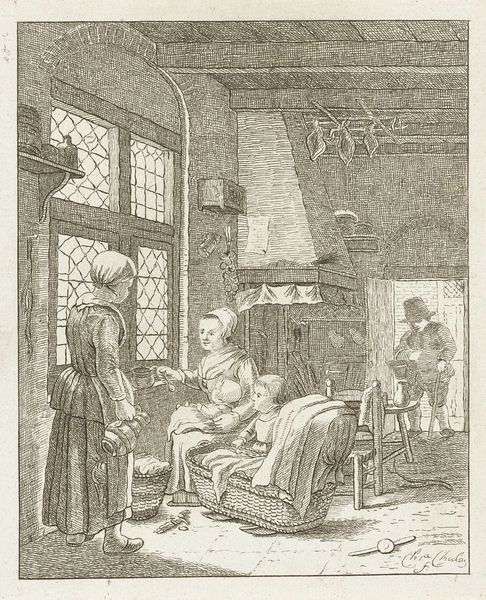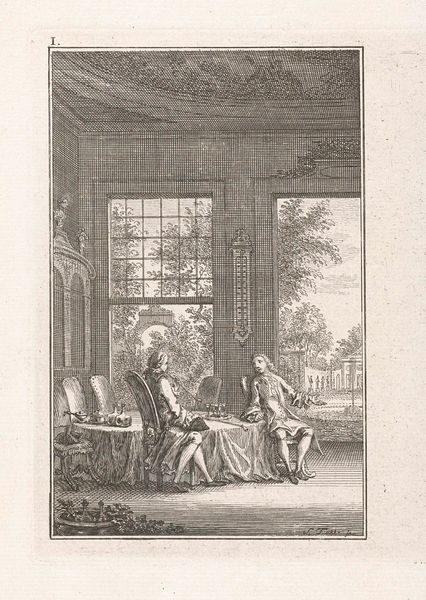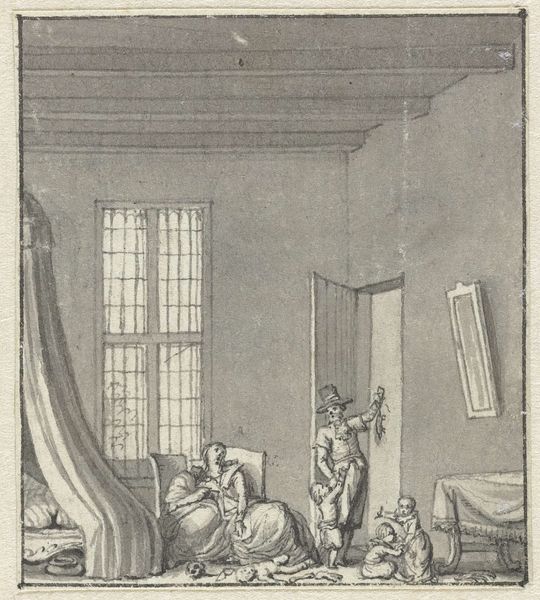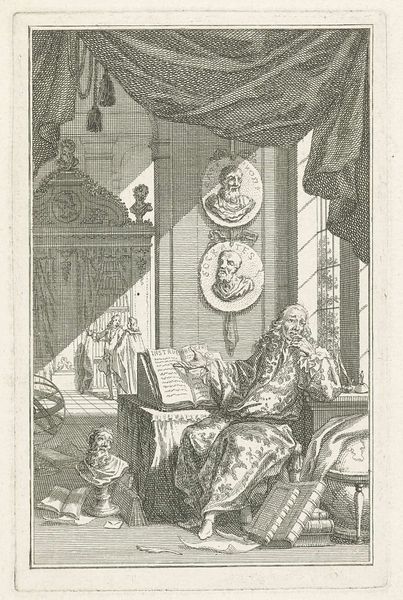
drawing, print, engraving
#
drawing
#
baroque
# print
#
genre-painting
#
engraving
Dimensions: height mm, width mm
Copyright: Rijks Museum: Open Domain
Curator: Looking at "Januari", an engraving made by Simon Fokke sometime between 1722 and 1784. It is currently held here at the Rijksmuseum. What is your first take? Editor: Stark! I’m struck by the intense crosshatching and its effect on the eye. The entire scene is so carefully rendered but, perhaps intentionally, feels kind of claustrophobic. A darkness enshrouds the space, relieved only by the outdoor scene viewed in the opening, where people chop wood. Curator: The genre scene of daily life that Fokke has portrayed would certainly resonate with the rising merchant class, but if you examine other works produced during the era you begin to notice the common anxieties about class status. Editor: Absolutely. The activities outside stand in sharp contrast to the domestic scene inside, really underscoring the distinct labors tied to separate social strata. There is a clear juxtaposition of nature and domesticity, further stratified by class and economic differences. The people cutting wood and working in the yard support those inside this building; perhaps they even are a single economic unit working and coexisting together. I do find the inclusion of dogs’ heads at the subjects' feet particularly striking— Curator: Dogs' heads? Now that's intriguing! Fokke’s choice to depict these images may be a symbolic representation of labor division in society, offering a look into Dutch society at that point in history, where an engraver captured domestic scenes during an era defined by shifting social structures, urbanization, and class distinctions. This type of interior-setting and image-building reinforced cultural notions of class. Editor: Yes! You see how deeply entwined individual experience and social structures were—gender and economic station played roles that reinforced those hierarchies. I also love thinking about art's agency within political discourse—these detailed images would surely prompt both reflection and, sometimes, conflict. Curator: Indeed. Fokke’s prints are not just decorative; they served as vital documents through which we could start exploring issues of representation, social identity, and collective experience. It offers an opening into the lives of 18th-century Dutch society. Editor: Well, exploring this engraving reminds us of art’s amazing capacity to give a framework, where each artistic decision serves as both window and mirror, illuminating not just a period in history but ourselves.
Comments
No comments
Be the first to comment and join the conversation on the ultimate creative platform.
